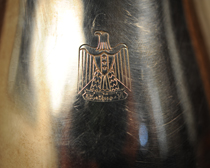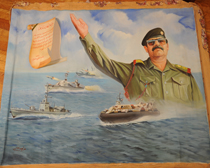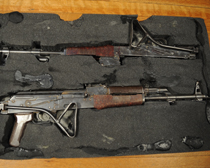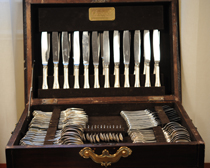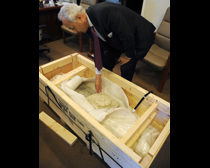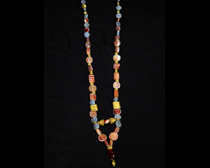Archived Content
In an effort to keep ICE.gov current, the archive contains content from a previous administration or is otherwise outdated. This information is archived and not reflective of current practice.
ICE investigations result in return of artifacts to Iraq
WASHINGTON — Today, U.S. Immigration and Customs Enforcement (ICE) and U.S. Customs and Border Protection (CBP) returned a collection of objects illegally imported into the United States from Iraq. The objects were discovered as part of four separate investigations by ICE's Homeland Security Investigations (HSI) in Tampa, Florida; Newark, New Jersey; El Paso, Texas; and Little Rock, Arkansas.
The objects were presented during a joint repatriation ceremony attended by Iraqi Ambassador to the United States, Samir Shakir Mahmood Sumaida'ie, Deputy Director of U.S. Immigration and Customs Enforcement Kumar Kibble, and Assistant Director in Charge of the FBI's Washington Field Office James McJunkin.
"On behalf of the Iraqi people, I want to thank ICE and U.S. Customs and Border Patrol for their commitment to seizing and returning cultural heirlooms to Iraq," said Iraqi Ambassador Sumaida'ie. "Iraq's long and rich history unites all Iraqis, regardless of ethnic or religious differences. Preserving our heritage is not only important to us as Iraqis but rather is important to all nations because it is an invaluable part of world heritage."
The objects presented as part of this repatriation ceremony included a collection of Saddam Hussein-era items and a Western Asiatic necklace (circa 3rd-2nd millennium B.C.). The Saddam-era objects were seized in an investigation that started in September 2003, in Jacksonville, Florida. As CBP inspectors were examining military containers shipped from Iraq, they discovered a number of items including large colorful paintings and two AK-47 rifles hidden behind defibrillators and other medical equipment.
In another investigation, begun in June 2007, CBP officers contacted the ICE HSI Newark office regarding a gold-etched cornelian and lapis lazuli bead necklace, which was listed as originating from Italy. Expert examination revealed that the necklace is from southern Mesopotamia, possibly from the royal tombs at Ur. It dates back to approximately 2,500 BCE and may have been looted from the Baghdad Museum.
In April 2010, the ICE HSI office in Little Rock, Arkansas, received a lead regarding possible stolen Iraqi cultural objects being sold on an online auction website. ICE HSI agents seized a Christofle 12-piece place setting with wood chest, and miscellaneous silver utensils and serving pieces inscribed with the crest of the Ba'ath Party in Iraq.
In September 2010, the ICE HSI office in El Paso, Texas began an investigation of Iraqi antiquities for sale on Craigslist. Undercover ICE HSI special agents contacted the antiquities seller, a member of the U.S. Army. After agents met him at his home, he took them to his garage and showed them a marble slab from Saddam Hussein's Baghdad palace. The seller explained that he obtained the marble from a vendor while he was in the Army patrolling towns in Iraq. Numerous items from Saddam's military and an additional marble slab were seized.
ICE HSI plays a leading role in investigating crimes involving the illicit importation and distribution of cultural property. ICE HSI uses its investigative authority to seize cultural property items if they were illegally imported into the United States. It also investigates the illegal trafficking of artwork, especially works that have been reported lost or stolen. ICE's Office of International Affairs, through its 69 attaché offices in 47 countries, works closely with foreign governments to conduct joint investigations, when possible.
ICE's specially trained investigators and foreign attachés partner with governments, agencies and experts to protect cultural antiquities as well as train investigators from other nations and agencies on how to find and authenticate cultural property, and how to best enforce the law to recover these items when they emerge in the marketplace.
Since 2007, ICE has repatriated more than 2,400 items to more than 20 countries including paintings from France, Germany and Austria; an 18th century manuscript from Italy; and a bookmark belonging to Hitler as well as cultural artifacts from Iraq including Babylonian, Sumerian and neo-Assyrian items.



